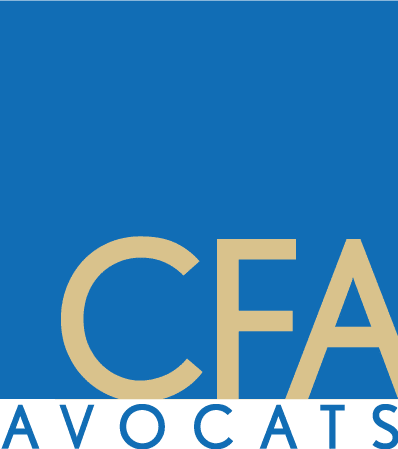Healthcare Industry – creation of a subsidiary company outside of France

Don’t go with the flow… anticipate the creation of your subsidiary
In an era of globalization and global healthcare, French healthcare companies (manufacturers of medicines or medical equipment) are already very active as far as exports from France are concerned. According to the LEEM[1] (source: The external trading of medicine / LEEM, the turnover for French exports just as regards medicines is around 33 billion euros (2022), namely 48% of the global turnover for the pharmaceutical industry. Exports are for the most part directed to other countries in Europe (more than 60%), 17% towards North/South America, nearly 12% towards Asia, 6% towards Africa et 2,7% to the Middle East. These figures are to be put in perspective regarding the worldwide pharmaceutical market (source: Balance-sheet 2020 edition (leem.org)), where North America alone makes up 47.3%, Europe 23%, Asia-Pacific 22.5%, Africa 0.5%, and the Middle East 2%.
Thus, the French industry is proportionally very present in Europe, in Africa, and in the Middle East, since these areas concern a proportion of exports that is greater than their share of the worldwide pharmaceutical industry.
The expansion overseas does not only concern exports, which are subject to regulatory restrictions, and notably as regards medicines (source: sending a declaration of medical export – ANSM (sante.fr)). Such expansion may also occur through the purchase of a foreign entity, or through the opening, from scratch, of commercial representation, a subsidiary company, a branch office, or a secondary establishment.
The origins of the project: a business development strategy
The reasons for healthcare companies to expand overseas are many (source: The pharmaceutical industry in France – Jobs and localization (LEEM).
It may concern the putting into effect of an activity of pharmaceutical distribution. In the same way, the pharmaceutical business or the manufacturer of medical equipment may wish to relocate overseas its research and development, benefitting from the qualifications of persons present locally, and sometimes in specialized sectors. Or, otherwise, it may concern the opening of a production site.
In this instance, the project precedes the law, and the accompaniment by a law firm for the putting in place of business development strategy defined by the healthcare company. The latter fixes the objectives, the law firm contributes to the putting into effect of the latter through a feasibility study and then an accompaniment regarding the legal and regulatory plan.
Overseas, yes, but where?
Approaching a totally unknown country or a geographical area, where the healthcare company possesses no previous experience, nor any precedent, may dissuade investors. They may also sometimes exist a link, even tenuous, between this company and the country in question: in an era of globalization, it is possible that someone within the company already knows the geographical area in question, which may be useful in the context of the envisaged expansion.
The total absence of a link with the market that has been targeted does not create an insurmountable barrier. CFA AVOCATS possesses a network of contacts in numerous countries, and particularly in Africa and in the Near East (Lebanon), and the lawyers have experience in numerous foreign jurisdictions.
In the same way, Europe and North America are areas of possible intervention, as well as North America.
The choice of installation in any given country will be preceded by a strategic choice of the healthcare company in terms of development and market entry. The role of lawyers and accounting experts may help to clarify this choice, taking account, notably, of the business environment in the country, or the geographical area in question.
Regulatory, fiscal, and corporate governance restraints
From a legal point of view, the constraints are of various kinds:
Firstly, the context relating to the implementation of a subsidiary company, or a commercial representation, in the country in question should be analyzed. This presupposes a study of the legal forms of the company allowed according to local law, with the constraints of a specific corporate governance, and notably the issue of the holding of shares by non-nationals, the obligation to appoint an auditor, insurance obligations, etc.
Similarly, it is necessary as from this initial stage to possess insight regarding property ownership by the subsidiary company and the possible restrictions in force. The commercial lease regime should be clarified since the subsidiary company is often the tenant of business premises. The local labor law should be studied, bearing in mind that a healthcare company will often have to delegate power to one of its employees for the purposes of ensuring the management of the company and relations with the parent company. The expat regime will also need to be examined, as well as the regime of local labor law contracts.
Finally, and above all, the specific constraints relating, for example, to the manufacture of a healthcare product should be studied prior to any effective implementation. These are principally of two types:
The first resides in the specific rules concerning the healthcare products (status of pharmaceutical establishment, market implementation and indeed local issues concerning reimbursement and price and then, if applicable, exportation outside the country of manufacture, etc.) and their coexistence with the rules applicable to the French, or European parent company.
The second concerns the environmental rules applicable in the country in question, and notably for the installation of a production site.
It is also necessary to clarify the tax rules for the flow of dividends to the parent company, as regards the law of the country of the subsidiary company as well as that of the holding country, as well as, if applicable, the provisions of the relevant tax treaty.
Once reviewed, the environment may reveal considerable disparities from one geographical zone to another. Apart from the question of language (in a francophone or anglophone zone, or outside these zones), a distinction is to be drawn between subsidiary companies created within and outside the European Union.
Within the frontiers of the European Union, constants will be noted, and linked notably to the harmonization of legislations applicable to healthcare products. The specificities of European countries should however not be neglected.
Outside the European Union, the specificities are considerably more pronounced. Constants may however be noted within the large regions of the world (North America, the Middle East, North Africa, Sub-Saharan Africa, Eastern Europe, South and Sout East Asia).
The example of Francophone Africa speaks for itself. This geographical zone however possesses contrasts. It is divided into several zones where the legal systems are sometimes aligned one with another (for example OHADA law), but the environmental and pharmaceutical legislations can present considerable differences. The initial work will consist in an identification of the applicable rules, an identification of the players (healthcare authorities) in a legal and regulatory environment in which the rules are not necessarily published in journals that are easily accessible.
The typical calendar for the creation of a subsidiary company: the principal steps
First stage:
Fixation by the healthcare company of its installation project and the objectives to be pursued. The healthcare company sets out the broad lines of its project to the lawyers of CFA AVOCATS, who then proceed with a preliminary framework of the project.
Second stage:
CFA AVOCATS contacts a local correspondent (generally a lawyer) and establishes a fee estimate regarding notably the intervention of the latter for the following phase.
Presentation of the fee estimate to the healthcare company for acceptance, or not.
Third stage:
A feasibility study of the project by the law firm (determining legal, regulatory and tax constraints), in conjunction, if necessary, with an accounting professional regarding the evaluation of the business environment and risks linked to the investment. The outlining of the cost of the creation of the subsidiary (registration costs, formation costs of establishment, etc.).
Identification, if necessary, of an accounting expert locally, an insurance company and a banking entity.
Fourth stage:
Legal formalities: in cooperation with the local correspondent, drafting of the bylaws of the subsidiary company, the registration of the latter, the drafting of employment contracts, assistance, if necessary, with the conclusion of a commercial lease, insurance contracts, the opening of a bank account, for the formalities regarding the installation of an industrial site (environmental law, various types of contacts), the commercialization of products, etc.
The above concerns the initial installation.
Fifth stage:
Following the installation the subsidiary of the healthcare company will exist independently and may need advice and assistance once again, which will essentially be devolved to advisers (accounting expert, lawyers, bank, etc…) who will be mandated locally.
[1] LEEM: Professional organization of pharmaceutical companies operating in France.
